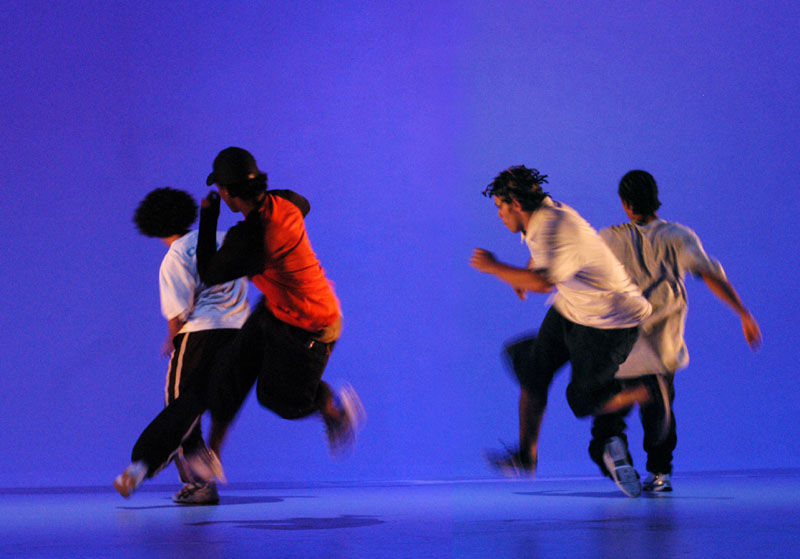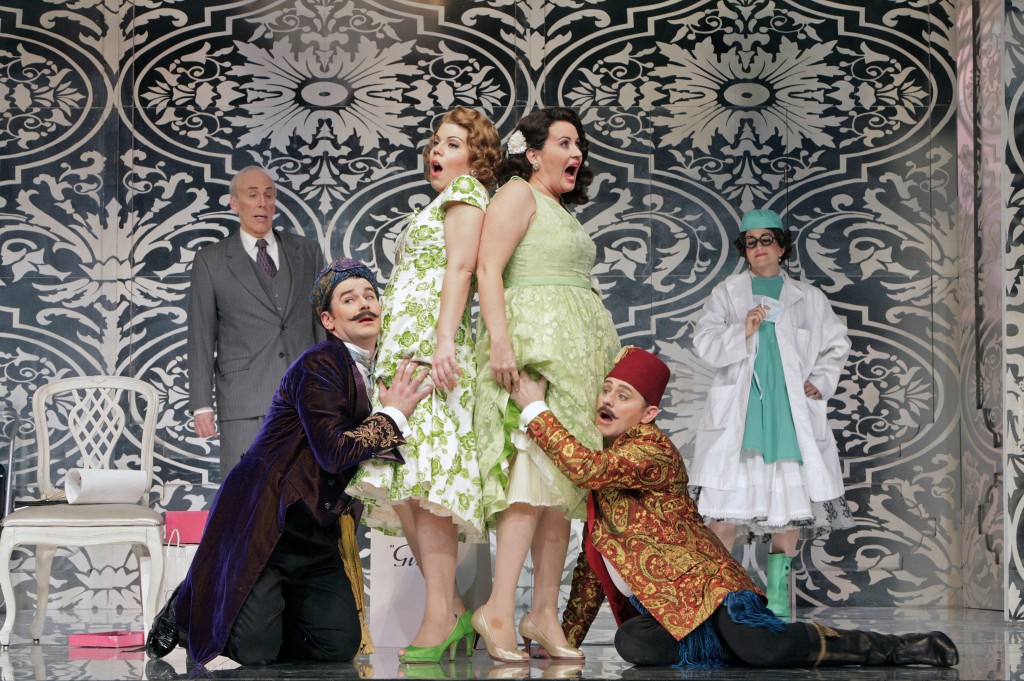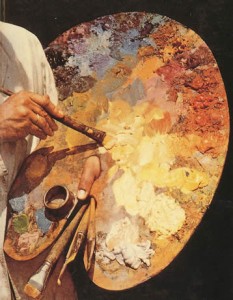
“These guys would be the best soccer team in town,” our friend Barry, a noted aficionado of both international football and contemporary dance, whispered. “They’d beat the Timbers!”
He’s probably right. I was thinking more along the lines of Romeo and Juliet — not the soppy love scenes, but those great, adrenalin-rushing street fights when the heat and idleness of summer in the city get too much and Tybalt and Mercutio and Romeo get into their fatal smackdown.
“Oh, yes!” our friend Catherine said afterwards. “That hip hop choreographer from Philadelphia actually did that. What’s his name? Reggie …”
“Watts,” Barry replied.
In fact, it was Rennie Harris; see the comment below. But never mind the memory lapse.
Wednesday’s opening night performance of Bruno Beltrao‘s Brazilian dance troupe Grupo de Rua inspired a lot of extreme mental-calisthenic stretches, although none could match the athleticism of the nine men on stage at the Bison Building in close-in industrial Northeast Portland. The latest offering in White Bird‘s Uncaged season, Grupo de Rua’s residency runs through Sunday, and all performances are sold out, although you could take a chance on nabbing a standby ticket.
Beltrao’s movement is based on street dance, and freely incorporates hip hop and capoeira and other styles that tend to be intensely personal, macho, competitive. But as Isabelle Poulin writes in her program essay, Beltrao “felt the desire to exploit otherness, the territory of the brother who is not the enemy.” So these brothers test each other, take each other’s measures, but not necessarily with the aim to determine victor and victim. Maybe Beltrao’s not the right guy to choreograph that street brawl in Verona, after all.
The opening scene in this company’s 50-minute dance H3 is performed in silence (that is, without music: the squeak of sneakers on floorboards creates its own insistent heartbeat) and from a position of stillness — a stillness so pronounced that I confess to getting itchy for something to happen.
Well, it did. The sporting aspect of this movement is undeniable: This is the aesthetics of top-flight athleticism. Spins, bumps, headstands, flips, the extreme magnetic control of hands and feet that seems to cry out for a ball to enter the performing stage — it’s thrilling, yes, and the thrills often come, as in a soccer or baseball game, in sudden blinding bursts of action that explode from a moment of repose.
There’s an amusing stretch when the playing field gives way to the barnyard for a simulated chicken strut, too, but for me the most astonishing thing was watching these aesthetic athletes run full-speed backwards, in pattern. It brought up the basic, forehead-slapping question you want every performance to pose: How’d they do that?
*
Next up at White Bird is a return downtown to the Arlene Schnitzer Concert Hall for a mainstage performance February 23 by Hubbard Street Dance Chicago. This adventurous troupe will perform dances by Ohad Naharin (Batsheva), Jorma Elo (Boston Ballet) and Johan Inger (former artistic director of Sweden’s Cullberg Ballet). I’ll be giving a pre-show talk at 6:45 p.m. in the Schnitz’s lower lobby. Don’t know what I’ll say yet, but I’m working on it. Inger’s piece Walking Mad is set to Ravel’s Bolero. Stop me before I start babbling about Bo Derek.
 Regulars Brett and Charles have both asked for such a thing, and it’s not just a reasonable request, it’s a no-brainer. Unfortunately Mr. Scatter’s brain just says no when he tries to figure out how to make it happen.
Regulars Brett and Charles have both asked for such a thing, and it’s not just a reasonable request, it’s a no-brainer. Unfortunately Mr. Scatter’s brain just says no when he tries to figure out how to make it happen. The best he can manage is a fuzzy screen photo of each candidate taken with his inadequate Blackberry phone, in the hopes that the pictures will help jog your memories back to what you saw in the last couple of days.
The best he can manage is a fuzzy screen photo of each candidate taken with his inadequate Blackberry phone, in the hopes that the pictures will help jog your memories back to what you saw in the last couple of days. What you see, from the top, is:
What you see, from the top, is:
 Does this typeface go with our headline style? Should we go Friday casual, sober-suited, country corduroy or maybe uptown funk? Do we want to look reliable, or available, or maybe flirtatious but with strict limits?
Does this typeface go with our headline style? Should we go Friday casual, sober-suited, country corduroy or maybe uptown funk? Do we want to look reliable, or available, or maybe flirtatious but with strict limits? For one thing, that’s just a terrific title, even better than the review’s zinger of a headline (based on a quoted poem set in a grocery store), The Free Verse Is in Aisle 3.
For one thing, that’s just a terrific title, even better than the review’s zinger of a headline (based on a quoted poem set in a grocery store), The Free Verse Is in Aisle 3. A facelift, if you will. A little cosmetic plastic surgery to bring the fresh bloom of youth back to our chubby literary cheeks.
A facelift, if you will. A little cosmetic plastic surgery to bring the fresh bloom of youth back to our chubby literary cheeks.
 Since those ancient days almost two years ago when we began, we’ve been working on a design template called
Since those ancient days almost two years ago when we began, we’ve been working on a design template called 